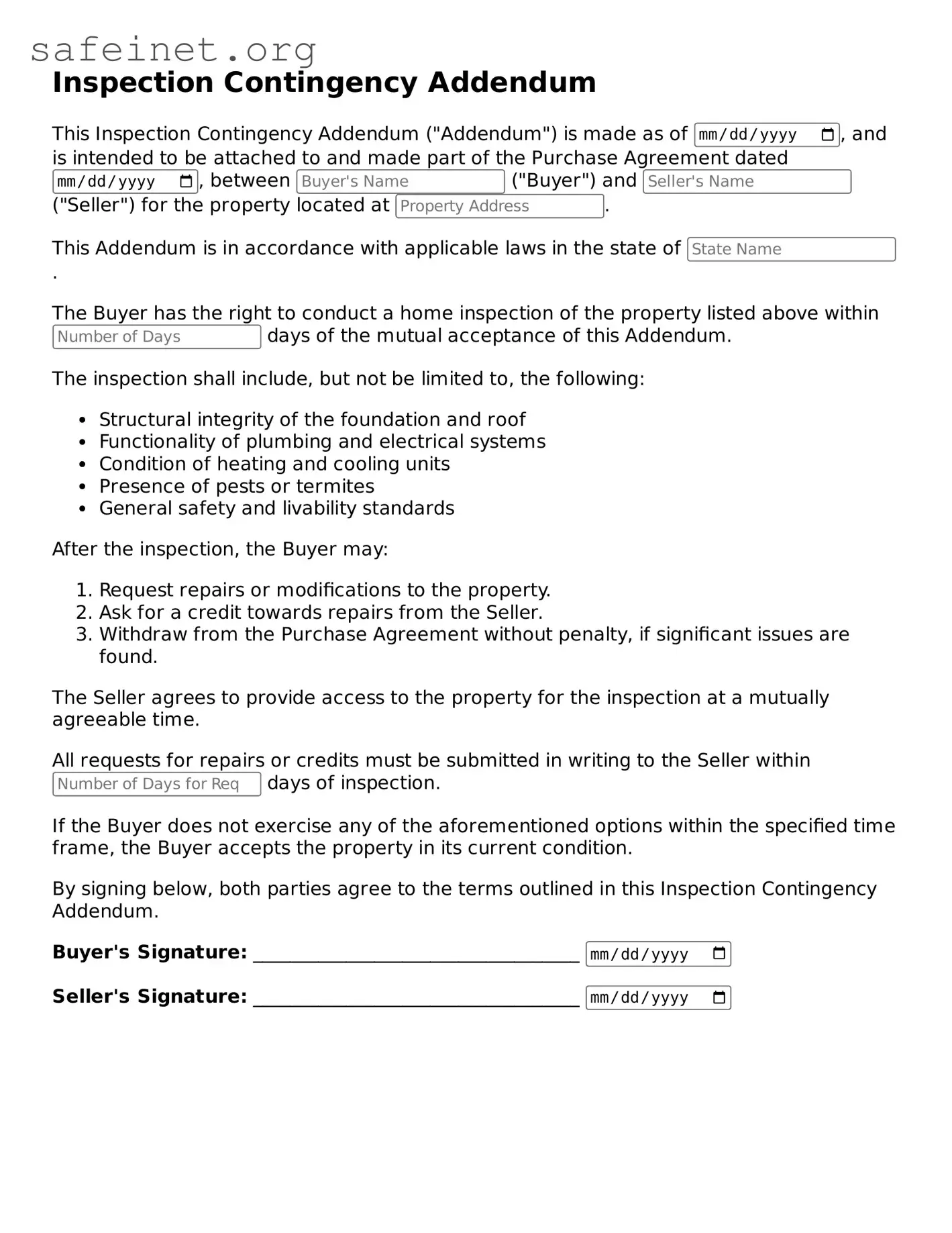Official Inspection Contingency Addendum Document
The Inspection Contingency Addendum is a key real estate document that allows buyers to conduct property inspections before finalizing their purchase. This form protects buyers by ensuring they have the opportunity to identify any potential issues with the property. Understanding how to use this addendum effectively can make a significant difference in your buying experience.
Ready to take the next step? Fill out the form by clicking the button below.
